Schedule Your Consultation with Dr. Prasad Here
- Home
- About Dr. Prasad
- Face & Eyes
Eyelifts
- Eyelid Surgery
- Eye lift Before and After Photos
- Asian Eyelid Surgery
- Upper Eyelid Surgery
- Upper Eyelid Hollow / Lower Brow Hollowing
- Under Eye Bag Surgery
- Eyelid Ptosis Surgery
- Transconjunctival Blepharoplasty
- Under Eye Fillers
- Eyelid Surgery Revision Specialist
- Thyroid Eye Disease
- Tear Trough Implants
- Eye Lift Questions and Answers
- Body
- Injectables
- Laser
- Hair Restoration
- Photos
- Hair Restoration Before and After Photos
- Eye lift Before and After Photos
- Upper Blepharoplasty Before and After
- Ptosis Surgery Before And After
- Facelift Before and After Photos
- Lip Enhancement Before and After Photos
- Under Eye Filler Before and After
- Blepharoplasty Before and After
- Lower Blepharoplasty Before and After Photos
- Eyelid Surgery Before and After
- Double Eyelid Surgery Before and After
- Contact Us
- Home
- About Dr. Prasad
- Face & Eyes
Eyelifts
- Eyelid Surgery
- Eye lift Before and After Photos
- Asian Eyelid Surgery
- Upper Eyelid Surgery
- Upper Eyelid Hollow / Lower Brow Hollowing
- Under Eye Bag Surgery
- Eyelid Ptosis Surgery
- Transconjunctival Blepharoplasty
- Under Eye Fillers
- Eyelid Surgery Revision Specialist
- Thyroid Eye Disease
- Tear Trough Implants
- Eye Lift Questions and Answers
- Body
- Injectables
- Laser
- Hair Restoration
- Photos
- Hair Restoration Before and After Photos
- Eye lift Before and After Photos
- Upper Blepharoplasty Before and After
- Ptosis Surgery Before And After
- Facelift Before and After Photos
- Lip Enhancement Before and After Photos
- Under Eye Filler Before and After
- Blepharoplasty Before and After
- Lower Blepharoplasty Before and After Photos
- Eyelid Surgery Before and After
- Double Eyelid Surgery Before and After
- Contact Us
Chin Augmentation – Achieving Projection and Contour With or Without Surgery
Enhancing the chin for more projection, or addressing a weak chin has been a popular facial plastic surgery as lacking projection in the chin transcends the aging process. A weak chin is primarily caused by the bone structure, when the position of the mandible or the lower jaw bone is further back compared to the upper jaw.
The traditional procedure for this has been chin implant surgery, usually made of silicone. However, with the introduction of longer lasting, more rigid facial fillers, and the evolution of filler placement techniques to add solid facial structure as well as volume, the look of a chin implant can be achieved conveniently and quickly without surgery.
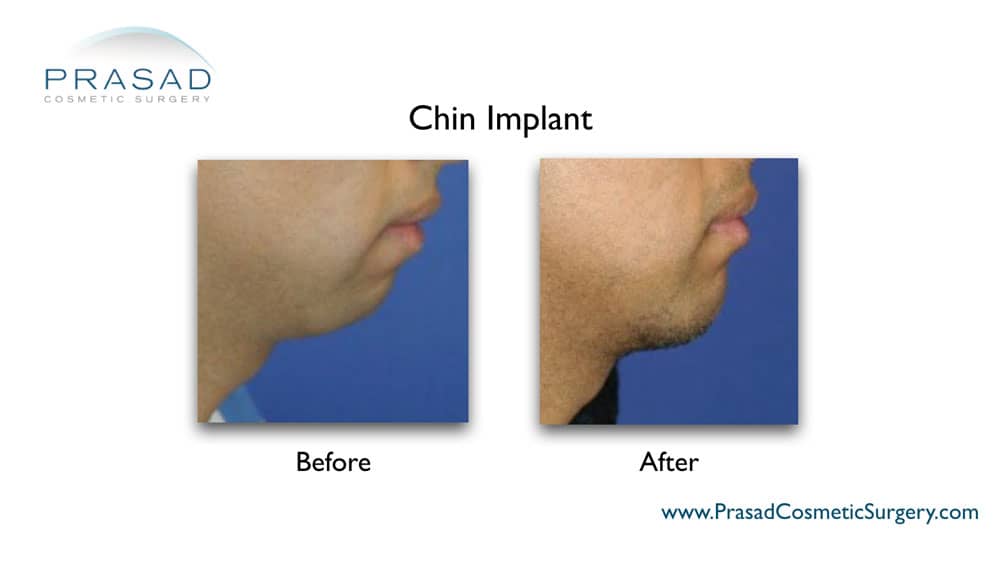
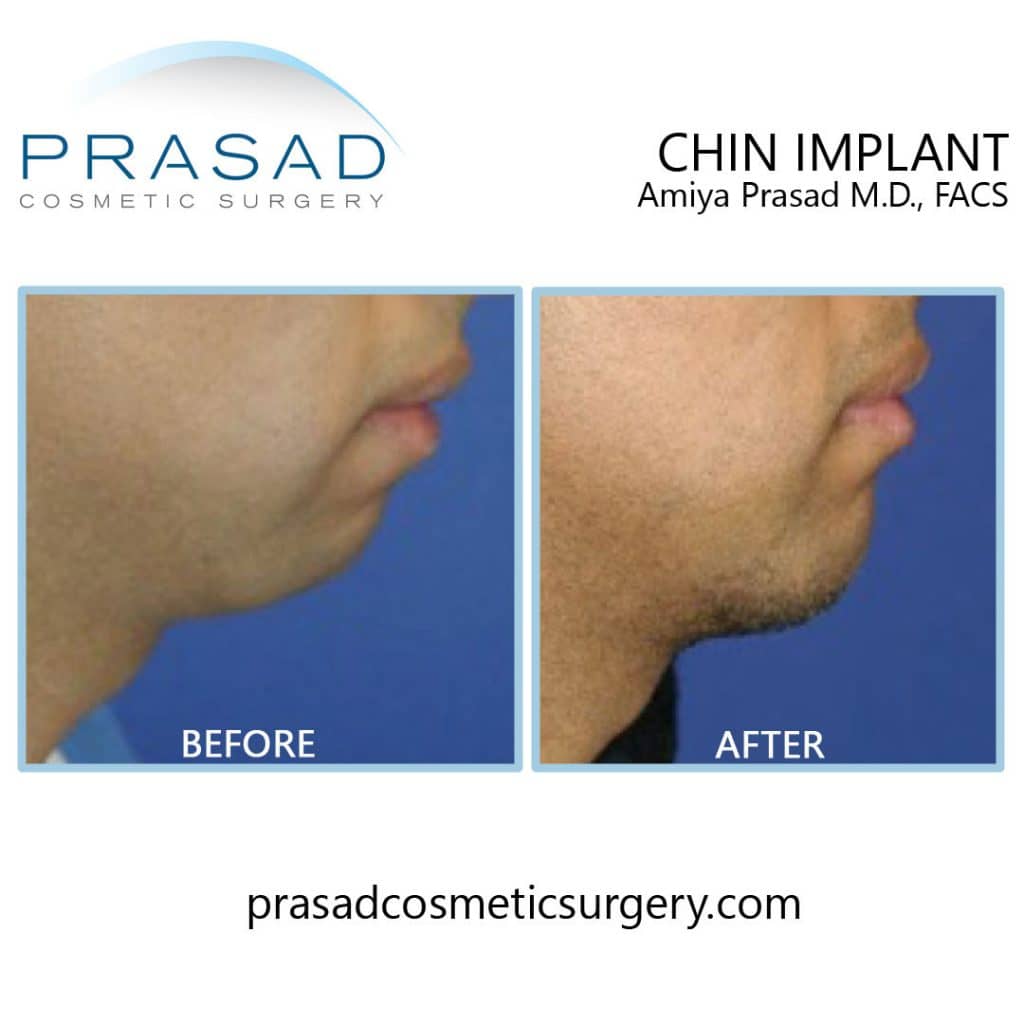
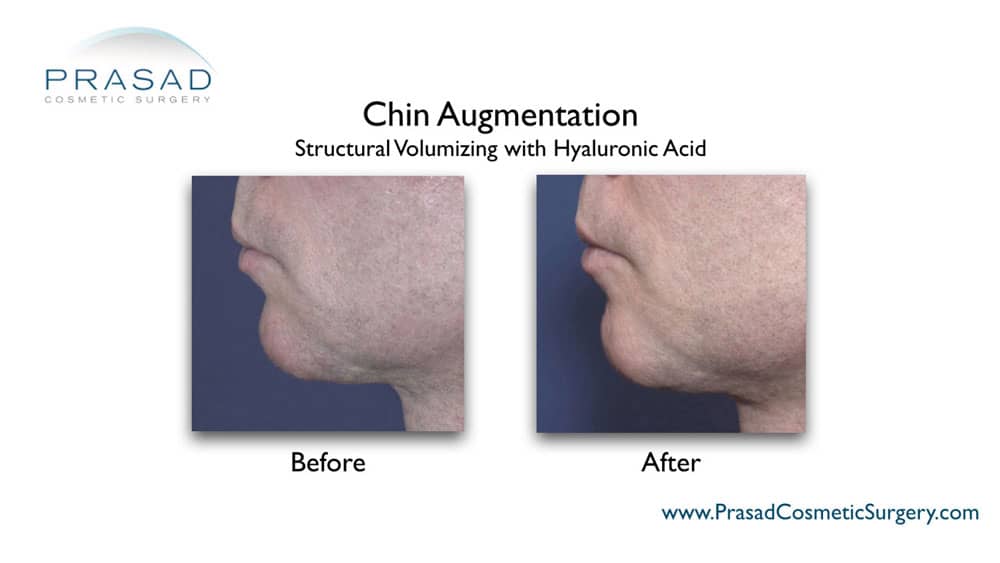
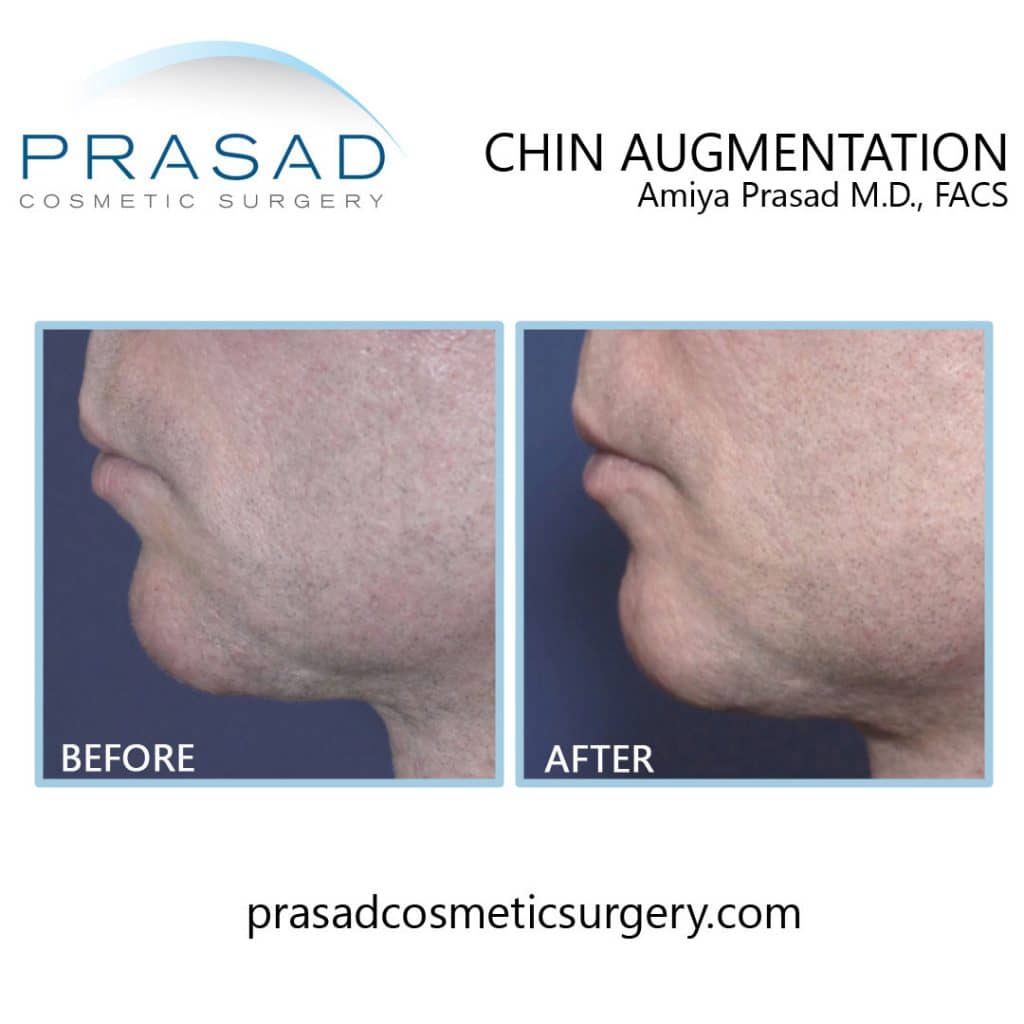
What is Chin Implant Surgery?
Dr. Prasad prefers to do chin implant surgery via an incision under the chin, which is not visible in the face. A pocket is created between the chin bone, and beneath the muscles of the chin. A customized implant made of silicone is the preferred choice of Dr. Prasad, which is held in place with sutures or titanium screws. Dr. Prasad prefers to do this surgery with local anesthesia under LITE™ sedation so the patient is more comfortable, and heals and recovers more quickly after surgery.
However, many other facial surgeons do prefer to perform chin implant surgery with general anesthesia, which involves longer recovery time for patients. Actual surgery time is 1-3 hours.
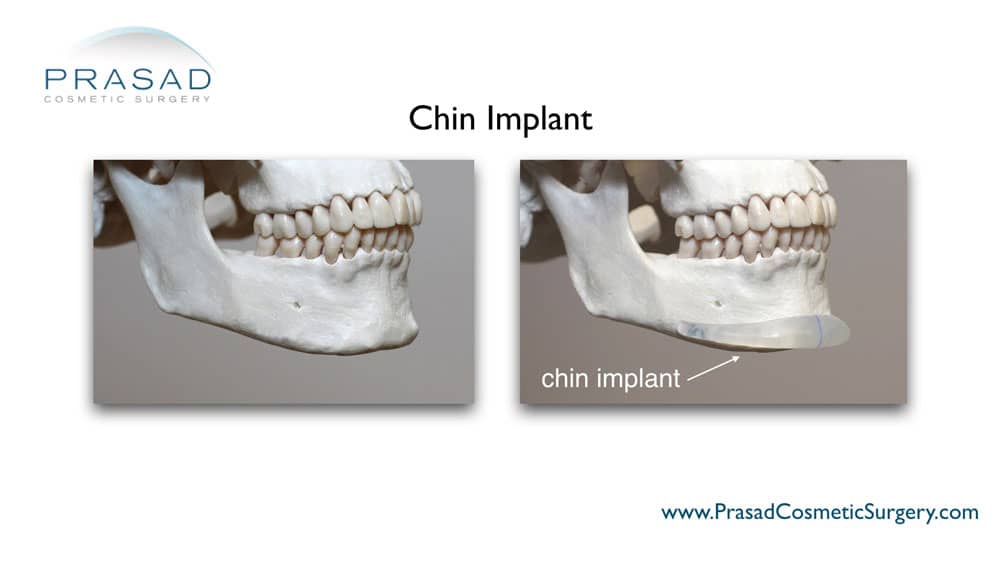
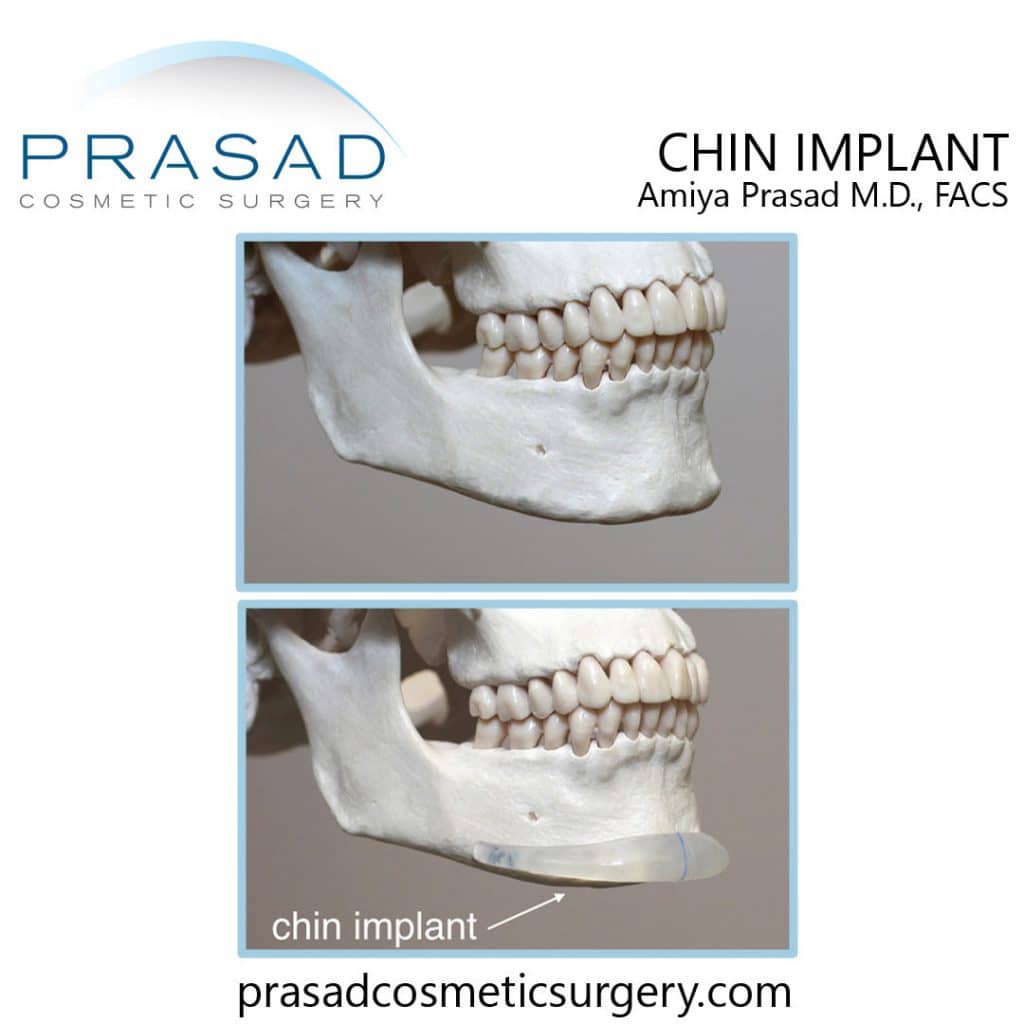
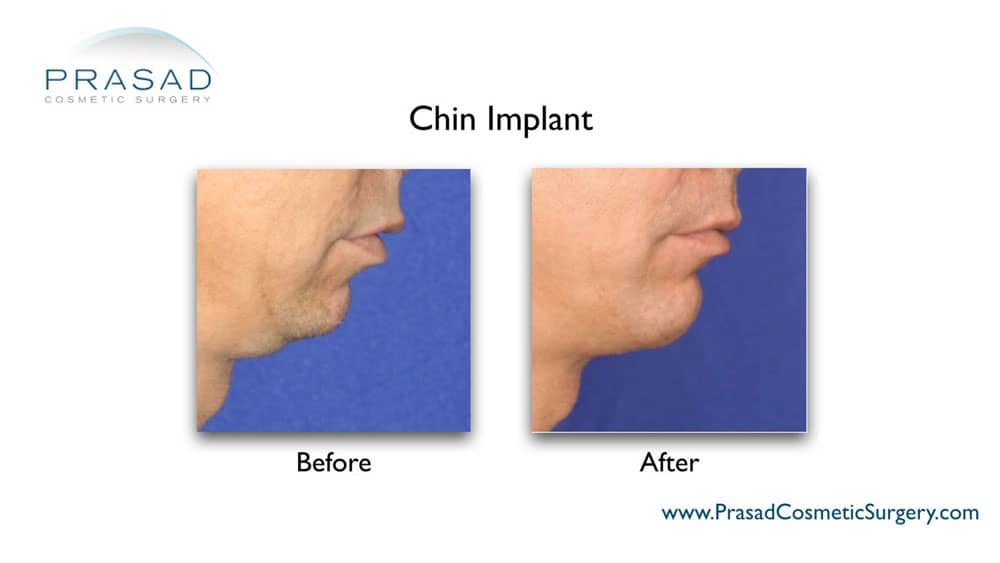
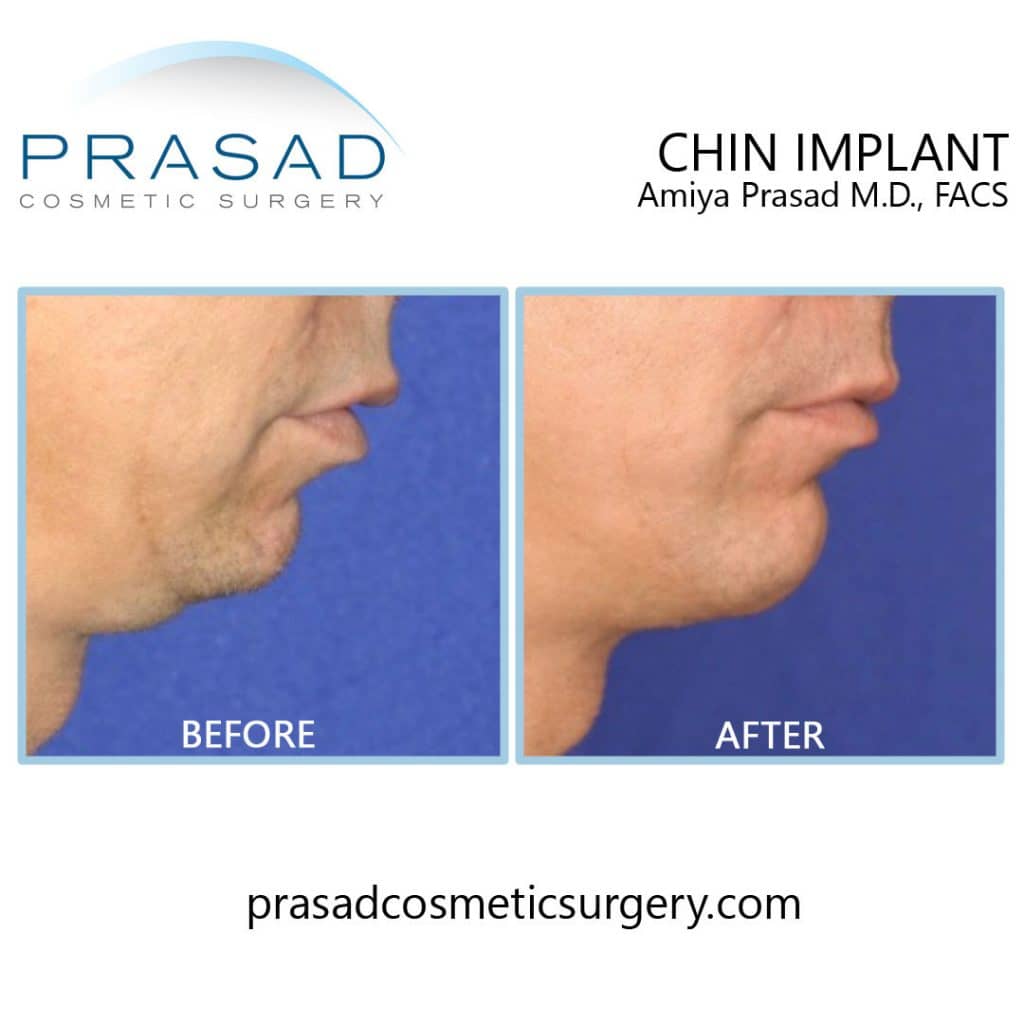
Are Chin Implants Permanent?
Although chin implants can look good for several years, there are important age-related changes that may affect facial implants in the long-term. As aging progresses the loss of facial volume occurs at the foundation where implants are anchored. Even though the cheek or chin implants are properly anchored to the bone to maintain a desired position, there will be continual changes on the natural facial anatomy including the bone, muscle, fat, and surrounding tissue. This progressive change can result in a disproportionate appearance of the facial implant relative to the rest of the face.
Can Chin Implants Cause Problems?
Chin implants are long lasting while its disadvantage with the purpose of chin augmentation are the same as any other implant surgery. The implants can shift, can become infected, or need removal due to the patient’s dissatisfaction of the results.
Non-Surgical Chin Augmentation
The introduction of more rigid, longer lasting cosmetic fillers has changed chin augmentation to make it more convenient, faster, and cost-effective for patients. The same look achieved with chin implant surgery can be done in minutes without surgery in many cases, and reduced recovery time.
How Does Chin Augmentation Work?
A thicker hyaluronic acid filler like Juvederm Ultra Plus or Juvederm Voluma is injected with a blunt cannula on top of the bone, and beneath the muscle to hold it in place with Dr. Prasad’s technique called Structural Volumizing. These thicker fillers are designed to add facial structure, and last up to two years.
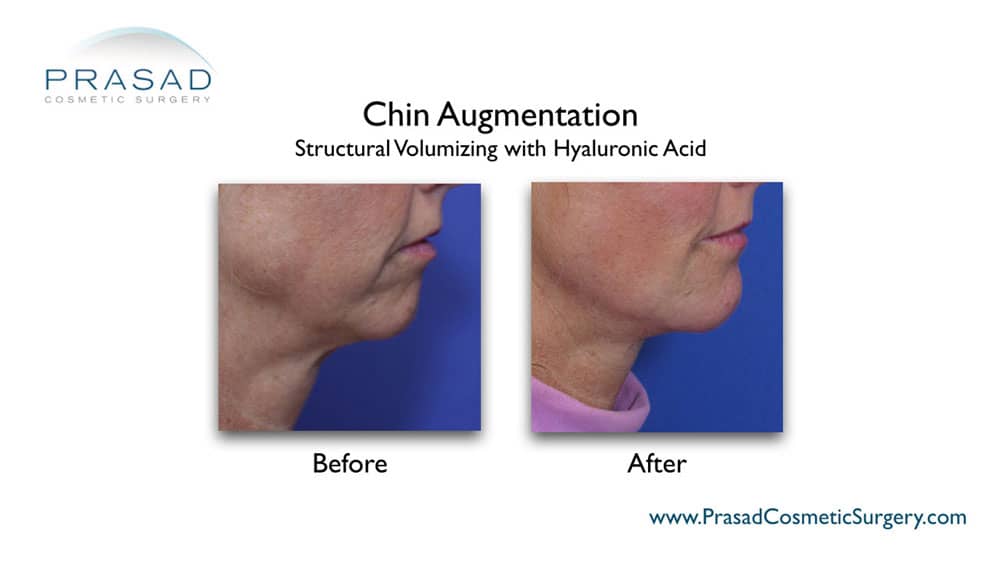

Hyaluronic acid fillers for chin augmentation are ideal for people who do not want to commit to surgery, or the permanence of a chin implant. Hyaluronic acid fillers are not permanent, so they do need periodic maintenance, but newer, thicker fillers can last up to two years. Hyaluronic acid is naturally found in the body, so these fillers are safely metabolized with time. If one changes their mind about the look, hyaluronic acid fillers can be dissolved without surgery using the enzyme hyaluronidase.
Limitations of Chin Augmentation
It is possible that lacking projection in the chin may be caused by a pronounced underbite that pushes the lower jaw back further than it should be. In such cases, cosmetic surgery may not be the best option, but rather oral surgery to set the chin and lower jaw forward. While this can be performed by some plastic or cosmetic surgeons, this is more the specialty of an oral surgeon as this has to do more with function rather than aesthetics.
How to Get Rid of Chin Dimples
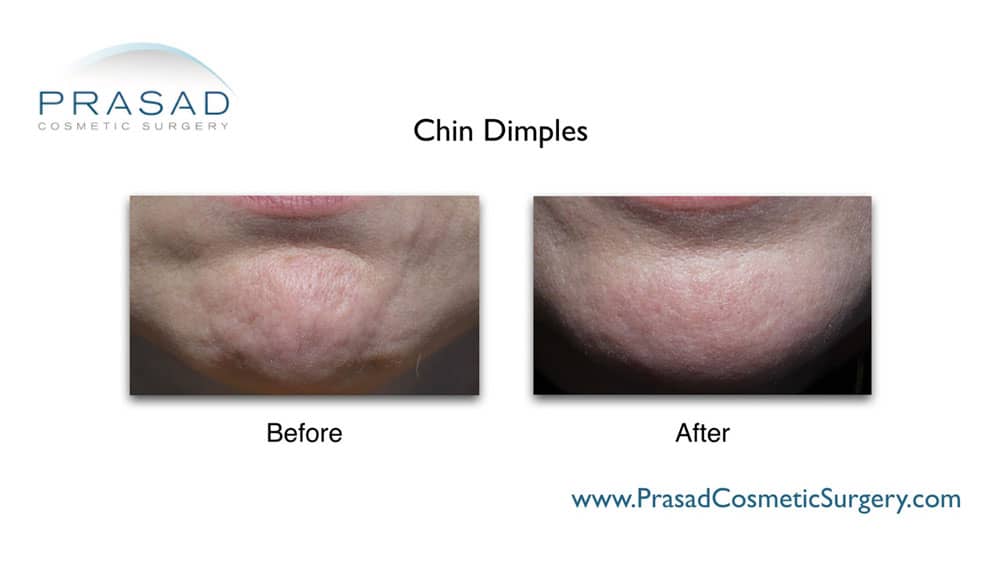
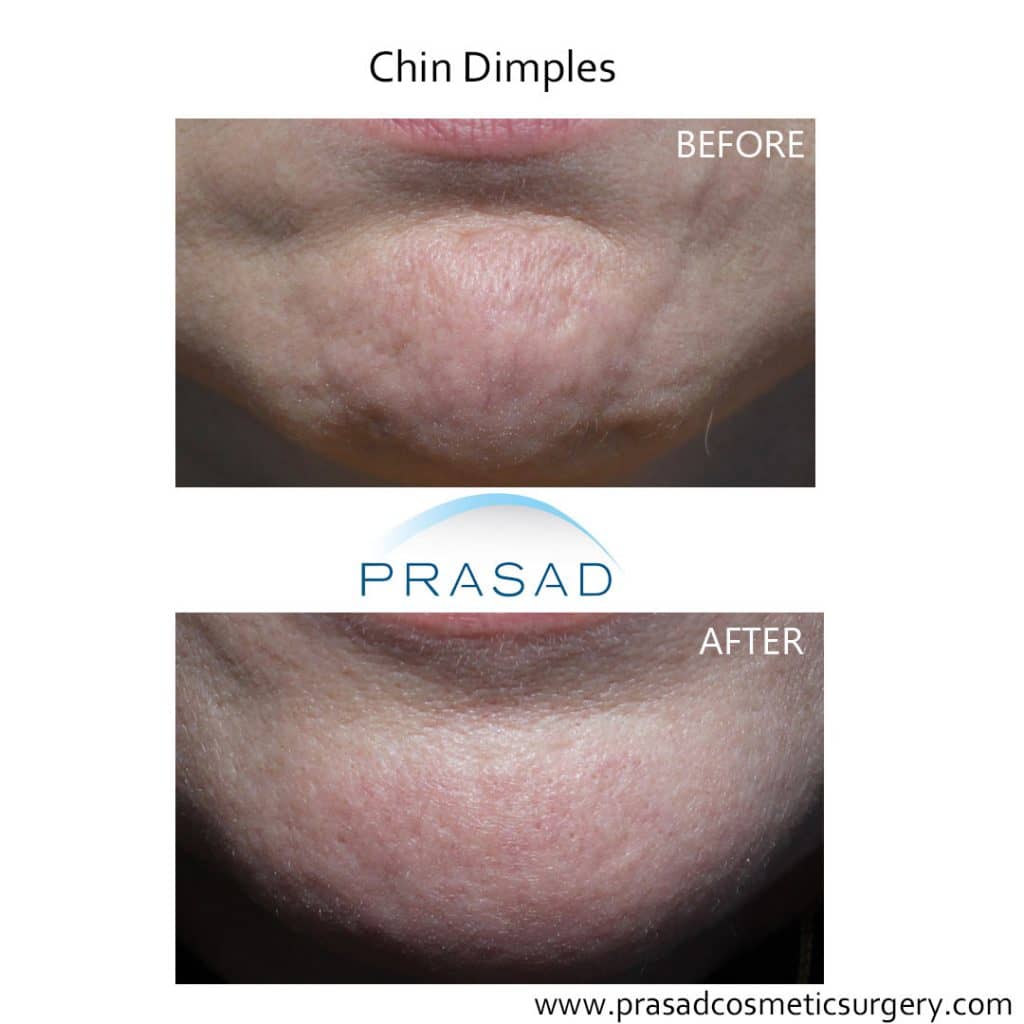
Dimpling of the chin, commonly called peau d’orange, orange peel skin, or even golf ball skin of the chin is caused by an overactive mentalis muscle. The excessive tightness of the mentalis muscle can also cause deep creases in the chin. Treatment for chin dimpling involves an injectable neurotoxin like Botox®, Dysport®, or Xeomin® to relax the mentalis muscle which reduces mentalis activity and smoothes the skin appearance of the chin, and decreases the depth of muscle-associated creases.
If you are considering improvement of your chin appearance, contact us at (212) 265-8877 in our Manhattan office, or (516) 742-4636 at Garden City, Long Island 24/7, or by filling out the contact form below, and we will get back to you.
